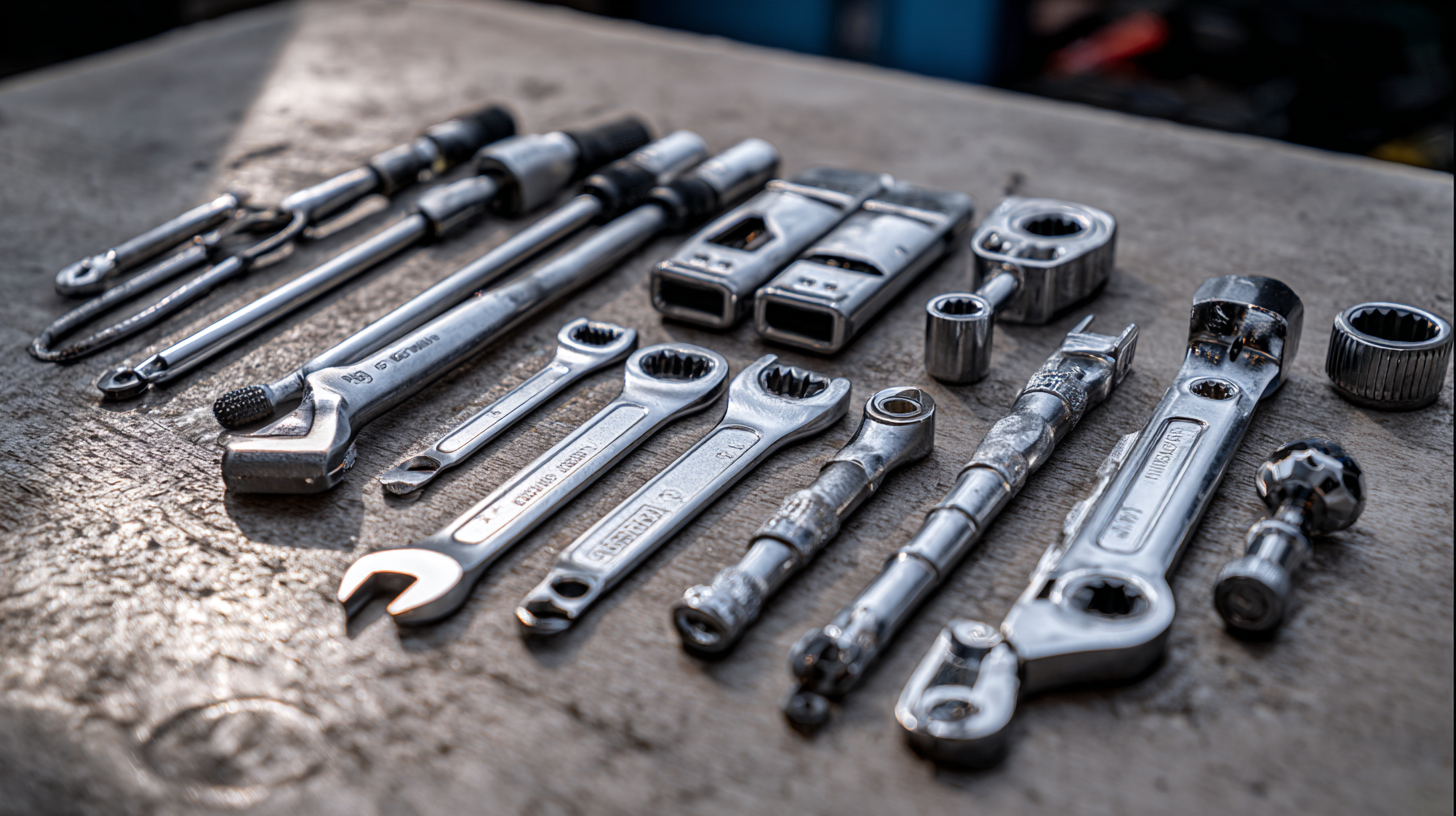Blog
Empowering Global Buyers with Top Quality Professional Tools from Leading Export Factories
In the ever-evolving landscape of global commerce, the demand for high-quality professional tools has surged, driven by industries seeking efficiency and durability in their operations. According to a report by Grand View Research, the global power tools market is anticipated to reach $43.9 billion by 2027, with an accelerated focus on innovation and after-sales support.

As businesses prioritize reliability and performance, understanding the advantages of robust after-sales services and manageable repair costs becomes paramount. Leading export factories are stepping up to empower global buyers with top-tier professional tools, ensuring that clients not only receive superior products but also the essential support systems needed to maintain them effectively. As companies navigate complex supply chains and increasing operational demands, the integration of quality service into the procurement process stands to redefine success in the competitive market.
Enhancing Global Trade: The Rise of Chinese Manufacturing Excellence
The rise of Chinese manufacturing excellence is reshaping global trade dynamics, presenting unparalleled opportunities for international buyers. According to a recent report by the McKinsey Global Institute, China's manufacturing sector accounted for approximately 28% of the world's total manufacturing output in 2020, a figure that continues to grow as companies increasingly leverage advanced technologies. This leap in productivity not only positions China as a global leader in manufacturing but also ensures that buyers can access top-quality professional tools that meet rigorous international standards.
Moreover, the emphasis on quality and innovation has led to significant investments in research and development within Chinese factories. The China National Development and Reform Commission noted that R&D spending in manufacturing has exceeded $200 billion annually, facilitating the emergence of products that incorporate cutting-edge technology and design. As competitive pressures rise, Chinese manufacturers are focusing on sustainable practices, ensuring that their production processes align with global environmental standards, making them even more attractive to discerning buyers worldwide. This commitment to excellence and innovation is pivotal in enhancing global trade and enables buyers to source reliable tools that drive efficiency and productivity.
Empowering Global Buyers with Top Quality Professional Tools from Leading Export Factories
| Category | Tool Type | Material | Export Volume (Units) | Average Price (USD) |
|---|---|---|---|---|
| Hand Tools | Wrenches | Steel | 150000 | 15.00 |
| Power Tools | Cordless Drill | Aluminum | 80000 | 75.50 |
| Garden Tools | Pruning Shears | Carbon Steel | 60000 | 20.00 |
| Construction Tools | Level | Plastic | 100000 | 10.00 |
| Automotive Tools | Socket Set | Chrome Vanadium | 40000 | 60.00 |
Navigating Quality Assurance: Collaborating with Leading Export Factories
Navigating quality assurance is a crucial aspect for global buyers looking to source professional tools from leading export factories. By collaborating with these factories, buyers can ensure they receive top-quality products that meet international standards. As countries expand their export strategies—like Chongqing's new action plan aiming to exceed 120 billion yuan in electric vehicle exports by 2027—it's essential for manufacturers to maintain rigorous quality control. Such initiatives highlight the growing importance of quality assurance in a competitive global market.

In a world where manufacturing capabilities are evolving rapidly, the relationship between global buyers and export factories must be built on transparency and trust. This collaboration not only aims to enhance product quality but also facilitates compliance with increasingly stringent export standards. For instance, recent measures by Thailand to elevate durian export quality standards showcase how nations are prioritizing excellence in their export offerings. As manufacturers strive to penetrate international markets, establishing a strong foundation in quality assurance remains key to unlocking success and driving innovation.
Innovative Professional Tools: Meeting Global Buyer Demands
In today’s competitive marketplace, meeting the demands of global buyers is paramount, especially in the realm of innovative professional tools. Recent reports indicate that procurement has become a crucial driver for value creation across supply chains. As we look towards 2024, manufacturers are expected to leverage targeted investments in digital technologies to enhance innovation while addressing skill gaps. This approach not only streamlines processes but also fosters the development of cutting-edge tools that resonate with global consumer expectations.
Tip: Prioritize understanding the specific needs and preferences of your target market. Engaging with buyers through feedback and surveys can lead to significant insights, helping to refine product offerings.
Moreover, the call for advanced and reliable tools aligns with the rise of new buyer experiences—consumers today seek excitement in their purchases while demanding reliability. As China emerges as a leader in innovation across several industries, it further emphasizes the need for global manufacturers to stay ahead by adopting innovative practices and creating high-quality products that stand out in a crowded market.
Tip: Embrace flexible and adaptive supply chain strategies. This not only helps in rapidly responding to market trends but also in implementing sustainable practices that resonate with eco-conscious buyers.
Global Demand for Professional Tools by Category (2023)
Building Partnerships: The Role of Quality in Global Supply Chains
In today's competitive marketplace, the quality of products is pivotal in establishing robust global supply chains. According to a report by McKinsey & Company, nearly 70% of companies believe that supply chain quality directly impacts customer satisfaction and overall profitability. As businesses seek to cut costs, they often overlook that sourcing from subpar suppliers can lead to long-term losses through product failures and customer dissatisfaction. This underscores the critical role that quality plays in building effective partnerships with leading export factories.

Moreover, the Global Supply Chain Institute highlights that organizations investing in quality management systems see a 15-30% improvement in operational efficiency. Such investments not only enhance product reliability but also foster trust between global buyers and suppliers. For instance, companies like Bosch and Siemens have increasingly prioritized quality assurance in their supply chains, which has resulted in a notable increase in customer loyalty and a significant reduction in return rates. These statistical insights reinforce that prioritizing quality in global supply chains isn't just an operational necessity—it's a strategic advantage.
Future Trends: The Evolution of Manufacturing in a Global Marketplace
The manufacturing landscape is undergoing a significant transformation as technological advancements and global connectivity redefine traditional practices. In a marketplace characterized by rapid changes, manufacturers are adapting to meet the evolving demands of global buyers. Emerging trends such as automation, artificial intelligence, and sustainable practices are revolutionizing production methods. Factories are increasingly leveraging smart technologies, enabling them to enhance efficiency, reduce waste, and improve product quality.
Moreover, the rise of e-commerce has created direct channels between manufacturers and consumers, shifting the power dynamics in favor of buyers. With access to a broader range of professional tools sourced from leading export factories, global buyers are now empowered to make informed purchasing decisions. This evolution is fostering a more competitive environment, where manufacturers must not only keep pace with technology but also prioritize customer engagement and feedback to design products that truly meet market needs. As we look to the future, the synergy between innovation and customer-centric approaches will be critical in shaping the next generation of manufacturing.
